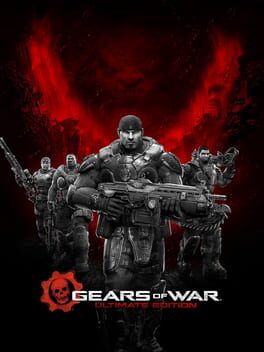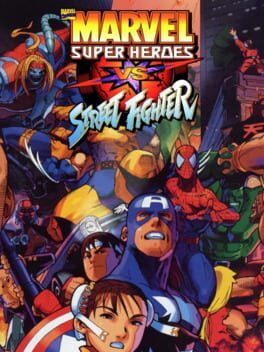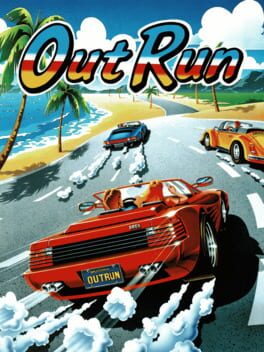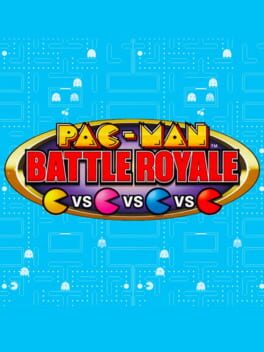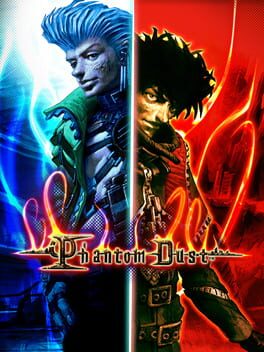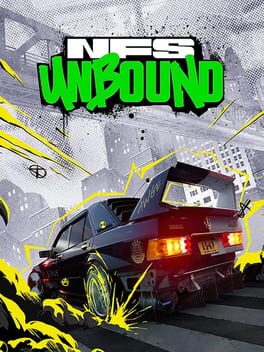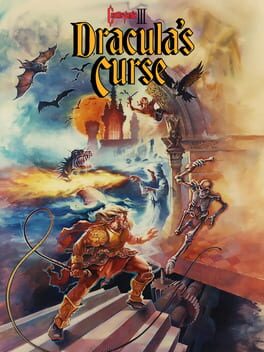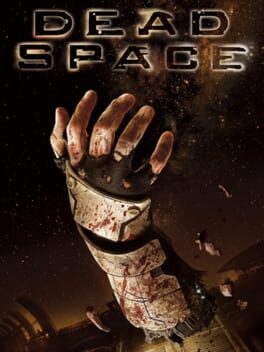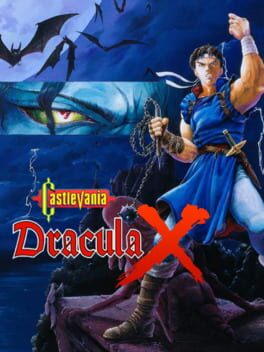ogremode
2022
Pentiment is the new narrative game with some RPG elements directed by Josh Sawyer, who famously directed Fallout: New Vegas. Set in 16th century Bavaria, you play as Andreas Maler, an apprentice illuminator and painter who splits his time working in the abbey on the book projects with monks and on his masterpiece, an art piece that he can show to potential clients once he leaves the abbey. After a murder, you investigate various people in the town looking for whoever is most likely to have the motive. Along the way you get to spend a lot of time with well-written, interesting characters, developing your own character along the way. Many choices are tracked and influence your options later, and you will feel ashamed of your words and deeds.
I really loved this game. Like Disco Elysium, the RPG elements serve more as the characterization of your protagonist than anything else. While different backgrounds will give you different ranges of responses in certain situations, these are never necessarily better or more preferable than other dialogue, and in fact may get you less preferable outcomes.
The game has a lot of style. The character and background artwork is inspired by illumination mansucripts, and character dialogue text is rendered depending on their backgrounds—printers get an animation that evoke printing, the monks that work in the scriptorium all write in beautiful script, and peasants and middle-class characters write in their own scripts. As well, the writing itself takes longer or shorter depending on the character. A peasant may write their script slow, but a monk with a lot of scriptorium experience will write in their script much faster.
The events and options you have depend on the section of time you're in. For example, you will do an event which will pass the time from the morning to lunch time, then more options open during lunch time. You end lunch by having a meal with someone, then the next time slot opens up and so on. The meals are used to develop characters—you often have a lot of options with who to eat with, and what they eat is dependent on their class. Monks may have a lot of wine and fish, while peasants will share small morsels almonds and cheese and bread with you.
I flew through the game and really loved the time I got to spend with the characters; as the narrative evolved, I came to care a lot for them, and felt genuine emotions about the story and my part in them. It's a real achievement.
I really loved this game. Like Disco Elysium, the RPG elements serve more as the characterization of your protagonist than anything else. While different backgrounds will give you different ranges of responses in certain situations, these are never necessarily better or more preferable than other dialogue, and in fact may get you less preferable outcomes.
The game has a lot of style. The character and background artwork is inspired by illumination mansucripts, and character dialogue text is rendered depending on their backgrounds—printers get an animation that evoke printing, the monks that work in the scriptorium all write in beautiful script, and peasants and middle-class characters write in their own scripts. As well, the writing itself takes longer or shorter depending on the character. A peasant may write their script slow, but a monk with a lot of scriptorium experience will write in their script much faster.
The events and options you have depend on the section of time you're in. For example, you will do an event which will pass the time from the morning to lunch time, then more options open during lunch time. You end lunch by having a meal with someone, then the next time slot opens up and so on. The meals are used to develop characters—you often have a lot of options with who to eat with, and what they eat is dependent on their class. Monks may have a lot of wine and fish, while peasants will share small morsels almonds and cheese and bread with you.
I flew through the game and really loved the time I got to spend with the characters; as the narrative evolved, I came to care a lot for them, and felt genuine emotions about the story and my part in them. It's a real achievement.
2022
Signalis is the debut production by rose-engine, a two-person team made up of Barbara Wittmann and Yuri Stern. This is a strong survival horror action game. There's a mechanical emphasis on scarcity, on being thoughtful with your actions. Every attack costs ammunition of some kind, and the game doesn't dole out enough ammunition for you to ever feel too comfortable for too long. As well, your character can only carry six items. There's even an in-fiction reason for it—there's a somewhat spiritual tenet of the culture called The Rule of Six. As you continue to play the game, you learn that having certain items can be dangerous for the androids, in that they may develop problematic, rebellious personalities if they interact with certain ideas or objects; the Rule of Six, which forces you to carefully balance the weapons you're carrying (each taking one slot), the ammunition types (another slot), special items, or keys, while leaving room for pick-ups you might encounter in the world, is a means of oppression, and you feel it. In fact, my only major problem with this game was the number of times I had to backtrack to pick up items or bring the rest of the keys to a door, since some doors can require six keys. This limitation, like the scarce ammo and health drops, successfully evoke the mood its trying to establish.
The art and narrative design of Signalis recalls a lot of other games—the game is honestly homage heavy, which I don't mind, but it might bug others. I might not mind it because I've also been inspired by so much of the same stuff.
The idea of the diametrical replikant/gestalt is straight out of the replicant/gestalts in Nier: Replicant, and the way there is an attempt to manage and control the replikants from developing personalities, and the way similar personalities develop for similar robots regardless of their station, is very Nier: Automata. The first wall safe combination includes the numbers 0451, an homage to the Looking Glass/Ion Storm games. (When I got to this safe I actually tried 0451 to open it, which I always do, but it didn't work; I felt really smart when I completed the puzzle to get the code and it had 0451 in there.) Plugging the various keys into the doors is reminiscent of the colored plates puzzle from Silent Hill, and in general the puzzles recall the first three Resident Evil and Silent Hill games. (And you're constantly jumping down or crawling through holes, like in Silent Hill.) I was also reminded of Control a few times—there's the censorship of certain key-words, and the design of the mine level reminded me a lot of Control's Black Rock Quarry. There's a lot of anime influence. The character designs are reminiscent of the anime Ergo Proxy and Tsutomu Nihei's manga BLAME!, or GANTZ. There's an unmistakable Neon Genesis Evangelion influence in the way the story develops towards its emotionally driven cosmic climax; there's also a weird fiction (my favorite kind) influence in the story: you find a copy of The King In Yellow in the game, and certain places reminded me a lot of what I imagined when reading The Fisherman by John Langan. The HUD and menus also seem inspired by Evangelion. There's an industrial looking funicular elevator that evokes the ones in Evangelion, Akira, and Metal Gear Solid. And of course there's a lot of Alien in the industrial spaceship and planet base designs. The PS1 style models, where the faces are fragmented into polygons evoking the ideas of a face, are used for cut scenes, and are reminiscent of Metal Gear Solid and Silent Hill. The game also references The Isle of the Dead), a series of paintings done by Arnold Böcklin who created many different versions of it, and which is homaged often in art, from artists like Salvador Dali to movies like Alien: Covenant.
But the game isn't just its influences. It's effortlessly stylish. The use of German in HUDs and cut-scenes are just cool; the cut-scenes themselves have a rapid editing and strange style to them, cutting between anime style drawn close-ups of characters or objects, text, tech HUDs. The game enters first person in certain spaces, and there are full first-person interludes that gives the game a nice pace. I dug this game, and I'm excited to see where rose-engine goes next.
The art and narrative design of Signalis recalls a lot of other games—the game is honestly homage heavy, which I don't mind, but it might bug others. I might not mind it because I've also been inspired by so much of the same stuff.
The idea of the diametrical replikant/gestalt is straight out of the replicant/gestalts in Nier: Replicant, and the way there is an attempt to manage and control the replikants from developing personalities, and the way similar personalities develop for similar robots regardless of their station, is very Nier: Automata. The first wall safe combination includes the numbers 0451, an homage to the Looking Glass/Ion Storm games. (When I got to this safe I actually tried 0451 to open it, which I always do, but it didn't work; I felt really smart when I completed the puzzle to get the code and it had 0451 in there.) Plugging the various keys into the doors is reminiscent of the colored plates puzzle from Silent Hill, and in general the puzzles recall the first three Resident Evil and Silent Hill games. (And you're constantly jumping down or crawling through holes, like in Silent Hill.) I was also reminded of Control a few times—there's the censorship of certain key-words, and the design of the mine level reminded me a lot of Control's Black Rock Quarry. There's a lot of anime influence. The character designs are reminiscent of the anime Ergo Proxy and Tsutomu Nihei's manga BLAME!, or GANTZ. There's an unmistakable Neon Genesis Evangelion influence in the way the story develops towards its emotionally driven cosmic climax; there's also a weird fiction (my favorite kind) influence in the story: you find a copy of The King In Yellow in the game, and certain places reminded me a lot of what I imagined when reading The Fisherman by John Langan. The HUD and menus also seem inspired by Evangelion. There's an industrial looking funicular elevator that evokes the ones in Evangelion, Akira, and Metal Gear Solid. And of course there's a lot of Alien in the industrial spaceship and planet base designs. The PS1 style models, where the faces are fragmented into polygons evoking the ideas of a face, are used for cut scenes, and are reminiscent of Metal Gear Solid and Silent Hill. The game also references The Isle of the Dead), a series of paintings done by Arnold Böcklin who created many different versions of it, and which is homaged often in art, from artists like Salvador Dali to movies like Alien: Covenant.
But the game isn't just its influences. It's effortlessly stylish. The use of German in HUDs and cut-scenes are just cool; the cut-scenes themselves have a rapid editing and strange style to them, cutting between anime style drawn close-ups of characters or objects, text, tech HUDs. The game enters first person in certain spaces, and there are full first-person interludes that gives the game a nice pace. I dug this game, and I'm excited to see where rose-engine goes next.
First time replaying since I played the original on Xbox 360. It might be because I just played Metal Gear Solid, but there's a surprising amount of Metal Gear Solid here—if Metal Gear Solid is a spy movie, Gears of War is the dumbest military science-fiction movie of all time. Everyone looks stupid and they are stupid. Marcus Fenix, like Solid Snake, is a Snake Plissken riff, the badass expert brought in for one last mission, except he wears a doo-rag and and goes 'Oh yeah!' whenever you get the reload bonus and he praises the player with a satisfying "Nice" when you land a head shot.
Gears of War is an extremely fun sanding down of Resident Evil 4's peculiarities into the commercially perfect mass market third-person shooter. It's smooth, designed to be popular through its difficulty. Because the enemies, orcs with guns, are good at shooting you when you're out of cover, the player must thoughtfully pilot Fenix around the battlefield from waist-high fence to walls of sandbags to round planters. You will naturally find yourself flanking and searching for more interesting positions. There are only a handful of enemy types, boiling down to a low HP rushing enemy, a mid HP shooting enemy type, and the high HP explosive enemy type, all of which pressure you and your position in their respective ways. The snap-to-cover system supporting all this is a lot fun and far less frustrating than so many of its imitators. (I loved triggering the action as far away as possible and watching Marcus Fenix slide across the ground into position like a vampire.) In the best levels, you can almost exclusively advance on enemies snapping from cover to cover; it makes me wonder what a game would look like that restricted your movement entirely to those choices. Besides the shooting and the moving, there's the added layer of the reload mini-game, where if you press the reload button a second time while a slider is in an optimal position you get a damage bonus and free rounds. Nailing this feels great, and failing feels like a real fuck-up; it adds a special element of risk and reward to every battle.
However, this beautiful loop is held back by long sequences of levels that fail to highlight the game's strengths—it often feels like there's either not enough enemies or they're too spread out. The game becomes a lot less fun when you have to go hunting for the last few mobs so you can take them out so you can activate the stupid cut scenes. As well, it can be hard to get a handle on the camera in tight corridors, making handling the rushing enemy types a real pain. One way the game likes to add pressure is to send some melee guys at you to drive you out of cover, but due to how close the camera is on Fenix I had a lot of trouble staying on top of where they were coming from, and it led to some annoying deaths. At it's best, Gears of War is a blast, but it can also be somewhat dull.
Gears of War is an extremely fun sanding down of Resident Evil 4's peculiarities into the commercially perfect mass market third-person shooter. It's smooth, designed to be popular through its difficulty. Because the enemies, orcs with guns, are good at shooting you when you're out of cover, the player must thoughtfully pilot Fenix around the battlefield from waist-high fence to walls of sandbags to round planters. You will naturally find yourself flanking and searching for more interesting positions. There are only a handful of enemy types, boiling down to a low HP rushing enemy, a mid HP shooting enemy type, and the high HP explosive enemy type, all of which pressure you and your position in their respective ways. The snap-to-cover system supporting all this is a lot fun and far less frustrating than so many of its imitators. (I loved triggering the action as far away as possible and watching Marcus Fenix slide across the ground into position like a vampire.) In the best levels, you can almost exclusively advance on enemies snapping from cover to cover; it makes me wonder what a game would look like that restricted your movement entirely to those choices. Besides the shooting and the moving, there's the added layer of the reload mini-game, where if you press the reload button a second time while a slider is in an optimal position you get a damage bonus and free rounds. Nailing this feels great, and failing feels like a real fuck-up; it adds a special element of risk and reward to every battle.
However, this beautiful loop is held back by long sequences of levels that fail to highlight the game's strengths—it often feels like there's either not enough enemies or they're too spread out. The game becomes a lot less fun when you have to go hunting for the last few mobs so you can take them out so you can activate the stupid cut scenes. As well, it can be hard to get a handle on the camera in tight corridors, making handling the rushing enemy types a real pain. One way the game likes to add pressure is to send some melee guys at you to drive you out of cover, but due to how close the camera is on Fenix I had a lot of trouble staying on top of where they were coming from, and it led to some annoying deaths. At it's best, Gears of War is a blast, but it can also be somewhat dull.
1986
Played one of the standing cabinets. Perfect arcade driving game, the machines are great. You got your pedals, your gear shift (in either high or low). There's major tension in knowing when to downshift so you can control your car in the corners while still maintaining speed. Crashes are punishing—you basically can't have a single screw-up if you want to get to the next goal before your time limit is up. As an arcade game it's fine, though it makes the releases at home feel overly punishing. And it's such a beautiful looking game.
2017
2017
Dipped into trial. Drifting model doesn't feel great. Can't remap controls, and not going to retrain my brain to gearshift with bumpers. I like the art style and the characters/story really have some kind of soul to them, especially after playing Forza Horizon 5. Another game like Gotham Knights (and maybe Deathloop) with an interesting take on a structured day/night game cycle. Build "heat" during the day by taking on races/activities to earn money, which makes night races more difficult, but you can't bank the money until after completing the night section.
The final Castlevania game for the NES introduces player choice, a major feature that would come to define the later Castlevania games. There are multiple paths you can take and multiple characters you can find and play as. For this first play-through, I went to the clock tower to pick up Grant, then I swapped him out with Alucard. I really liked playing as Grant—he's refreshingly agile, able to climb walls and ceilings and crawl through gaps Trevor can't fit through. Alucard I never got the hang of; it felt like his attack range is too short. Still, I mostly played as Trevor throughout. I just like hopping and whipping dudes.
This game has some unfair levels and bosses that I never quite felt like I found the solutions to, like the double mummy and the cyclops. A lot of bosses do a thing where they push you into a corner, and Trevor is not agile enough to get around them without taking damage. The Dracula fight isn't the worst one (it doesn't hold a floating candle to the one in Dracula X), but it will sometimes screw you over during his boss fight by giving you no room to move and dodge his third fire wall—I'm not sure what I'm supposed to do in that situation except take damage, and it seems to happen pretty randomly. Some of the levels will also do the thing I hate where you're stuck on stairs taking damage because an enemy won't move from the top of the stairs while they chuck bones at you. I also hated having to climb the falling debris, which just felt super tedious.
At its best, its still a lot of fun to hop and whip through these levels, and the NES look is really charming. I still plan on checking out the Japanese version, and trying the route I didn't take this time; hopefully that version fixes some of these difficulty issues.
This game has some unfair levels and bosses that I never quite felt like I found the solutions to, like the double mummy and the cyclops. A lot of bosses do a thing where they push you into a corner, and Trevor is not agile enough to get around them without taking damage. The Dracula fight isn't the worst one (it doesn't hold a floating candle to the one in Dracula X), but it will sometimes screw you over during his boss fight by giving you no room to move and dodge his third fire wall—I'm not sure what I'm supposed to do in that situation except take damage, and it seems to happen pretty randomly. Some of the levels will also do the thing I hate where you're stuck on stairs taking damage because an enemy won't move from the top of the stairs while they chuck bones at you. I also hated having to climb the falling debris, which just felt super tedious.
At its best, its still a lot of fun to hop and whip through these levels, and the NES look is really charming. I still plan on checking out the Japanese version, and trying the route I didn't take this time; hopefully that version fixes some of these difficulty issues.
2008
Dead Space is one of many Western Resident Evil 4-likes, transposing the survival action format to a science-fiction horror setting that combines the dingy, work-a-day industrial space ship of Alien with the gory, fleshy creature design of The Thing. I'm a sucker for this kind of setting, and while I didn't care about the story or characters at all, I mostly had a good time with the game.
Compared to Resident Evil 4, Dead Space has a lot less gameplay friction but manages to be, at least for me, at least for a while, a lot scarier. Horror games always get under my skin, and I felt a consistent sense of suspense piloting Isaac through unfamiliar, shadowy parts of SS Ishimura. This mostly wore off after say the first half of the game, though even near the end, when I had learned most of the game's spooky tricks and felt as one with my pulse rifle and plasma cutter, there was always the underlying threat that a monster might jump out of anywhere—and often, they did! I'm pretty susceptible to this kind of feeling, and really treasure it in films and games—it's like a roller coaster you can ride at home. Dead Space's atmosphere is awesome and the best part of the game.
While I definitely felt suspense playing this game, I rarely felt the dread that typically comes with the survival horror genre; very rarely did I feel unprepared or resource scarce. Playing on the medium difficulty, I had the opposite problem: I had so many items that I was constantly having to visit the store to drain my inventory. I did play carefully and thoughtfully, and decided early on that I would stick to using the rifle and cutter. This let me sell every other ammo type I found. I sold every single air fan and stasis refill—every time I ran out of stasis fuel there would be a free recharge somewhere nearby, and there was always one near puzzles that required the ability. I sold most of the med kits I found (always felt like I had plenty). And I often even felt comfortable enough selling excess bullets, if I was close to affording a power node (I always kept at least one on me in case I ran into a loot room). Through this kind of intelligent scrimping and saving I had fully upgraded my two weapons entirely in the first 7 chapters of the game, and had also bought every armor upgrade as soon as it was available.
Even though I only used these two weapons for the majority of the game, I never felt like I was missing anything in my armory. It wasn't until the tenth chapter that I started purchasing other weapons—I picked up the flame thrower and the shotgun like force gun. I never found a great use for the flame thrower, but got a lot of use out of the force gun, especially when it came to the tiny masts of flesh that will crawl around in a horde and jump on you. In replays, or if I play the sequel or remake, I'll probably make picking up the force gun equivalent more of a priority, but like I said, it never felt completely necessary. Besides the lack of an enemy type clearly calling for a different approach, I was never pressed to use another weapon out of sheer ammo necessity like I do in Resident Evil.
Each level has a similar loop—there's a problem you need to solve for story reasons, and you're sent off to a different part of the capital ship to resolve it. You wander through the spooky hallways, fighting enemies completing puzzles, until you reach the end of the section. At the end of each level is a boss battle, a particularly large scale puzzle, or a mini-game. I never completely jived with these parts of the game, instead mostly liking the enemy encounters and atmosphere. The puzzles felt tedious or unclear. For example, I was stuck for a few days on the part where you place a tracker on an asteroid. I would immediately get killed, and I felt like I just couldn't get the timing right. It turned out the solution was to time your dive onto the asteroid then immediately walk around the asteroid to outside the ship, where there is no spinning death obstacle. I felt like a moron, but I don't think the option was very clearly communicated. Even when the puzzles aren't outright annoying, they could feel tedious; maneuvering a bunch of satellites in a circle just feels like I'm slowing down to deal with busy work between the parts that are fun. The same goes for the turret mini-games that make me want to bang my head against a wall in every video game, and to a lesser extent the boss battles, which are easy-peasy "shoot the weak spot and strafe" affairs. But at least the boss battles have some spectacle to them.
As to the regular enemies, I had a lot of fun fighting them. Not as much fun as an encounter in Resident Evil 4, but it never got old popping limbs off enemies, or unloading way too many pulse rounds into a baby. My big problem, when I had one, was seeing them. The elite class of certain monsters all look like they've been scorched black, and can be hard to make out as they crawl or bound across geometry. One late enemy type, the one that does the cliché creepy juddering, fixes this by having them wear white military uniforms; I wish the elite enemies had a similar paler features, or something else to distinguish them without making them harder to see. The effect of them suddenly popping out of the dark backgrounds isn't really worth the frustration of not being able to quickly spot the baby that's shooting you.
Altogether I had a good enough time playing about 45 minutes a day for a week or so (finishing a little more than 9 hours by the count on my save), though I was never compelled to jump back in like I am with the games I really love. Part of that is the fear factor, but a lot of it was the trudgery.
Compared to Resident Evil 4, Dead Space has a lot less gameplay friction but manages to be, at least for me, at least for a while, a lot scarier. Horror games always get under my skin, and I felt a consistent sense of suspense piloting Isaac through unfamiliar, shadowy parts of SS Ishimura. This mostly wore off after say the first half of the game, though even near the end, when I had learned most of the game's spooky tricks and felt as one with my pulse rifle and plasma cutter, there was always the underlying threat that a monster might jump out of anywhere—and often, they did! I'm pretty susceptible to this kind of feeling, and really treasure it in films and games—it's like a roller coaster you can ride at home. Dead Space's atmosphere is awesome and the best part of the game.
While I definitely felt suspense playing this game, I rarely felt the dread that typically comes with the survival horror genre; very rarely did I feel unprepared or resource scarce. Playing on the medium difficulty, I had the opposite problem: I had so many items that I was constantly having to visit the store to drain my inventory. I did play carefully and thoughtfully, and decided early on that I would stick to using the rifle and cutter. This let me sell every other ammo type I found. I sold every single air fan and stasis refill—every time I ran out of stasis fuel there would be a free recharge somewhere nearby, and there was always one near puzzles that required the ability. I sold most of the med kits I found (always felt like I had plenty). And I often even felt comfortable enough selling excess bullets, if I was close to affording a power node (I always kept at least one on me in case I ran into a loot room). Through this kind of intelligent scrimping and saving I had fully upgraded my two weapons entirely in the first 7 chapters of the game, and had also bought every armor upgrade as soon as it was available.
Even though I only used these two weapons for the majority of the game, I never felt like I was missing anything in my armory. It wasn't until the tenth chapter that I started purchasing other weapons—I picked up the flame thrower and the shotgun like force gun. I never found a great use for the flame thrower, but got a lot of use out of the force gun, especially when it came to the tiny masts of flesh that will crawl around in a horde and jump on you. In replays, or if I play the sequel or remake, I'll probably make picking up the force gun equivalent more of a priority, but like I said, it never felt completely necessary. Besides the lack of an enemy type clearly calling for a different approach, I was never pressed to use another weapon out of sheer ammo necessity like I do in Resident Evil.
Each level has a similar loop—there's a problem you need to solve for story reasons, and you're sent off to a different part of the capital ship to resolve it. You wander through the spooky hallways, fighting enemies completing puzzles, until you reach the end of the section. At the end of each level is a boss battle, a particularly large scale puzzle, or a mini-game. I never completely jived with these parts of the game, instead mostly liking the enemy encounters and atmosphere. The puzzles felt tedious or unclear. For example, I was stuck for a few days on the part where you place a tracker on an asteroid. I would immediately get killed, and I felt like I just couldn't get the timing right. It turned out the solution was to time your dive onto the asteroid then immediately walk around the asteroid to outside the ship, where there is no spinning death obstacle. I felt like a moron, but I don't think the option was very clearly communicated. Even when the puzzles aren't outright annoying, they could feel tedious; maneuvering a bunch of satellites in a circle just feels like I'm slowing down to deal with busy work between the parts that are fun. The same goes for the turret mini-games that make me want to bang my head against a wall in every video game, and to a lesser extent the boss battles, which are easy-peasy "shoot the weak spot and strafe" affairs. But at least the boss battles have some spectacle to them.
As to the regular enemies, I had a lot of fun fighting them. Not as much fun as an encounter in Resident Evil 4, but it never got old popping limbs off enemies, or unloading way too many pulse rounds into a baby. My big problem, when I had one, was seeing them. The elite class of certain monsters all look like they've been scorched black, and can be hard to make out as they crawl or bound across geometry. One late enemy type, the one that does the cliché creepy juddering, fixes this by having them wear white military uniforms; I wish the elite enemies had a similar paler features, or something else to distinguish them without making them harder to see. The effect of them suddenly popping out of the dark backgrounds isn't really worth the frustration of not being able to quickly spot the baby that's shooting you.
Altogether I had a good enough time playing about 45 minutes a day for a week or so (finishing a little more than 9 hours by the count on my save), though I was never compelled to jump back in like I am with the games I really love. Part of that is the fear factor, but a lot of it was the trudgery.
Akumajō Dracula X: Chi no Rondo is the perfection of traditional Castlevania; in many ways, it feels like a groovy remake of the original game, informed by the lessons learned in the prior games. There's alternative paths and levels, but they're pleasant surprises, rewards for exploration instead of outright choices made between levels. The movement and attacks have been streamlined—Richter's whip attack is only horizontal, and his jumping requires NES precision. The only thing that sets Richter apart from prior Castlevania PCs is his backflip, which is useful and quite satisfying to pull off. But Rondo's focus isn't addition—it's perfection. He feels great to drive here, especially compared to how he feels in Castlevania: Dracula X, where he drops and slides like a slick stone.
Like in Castlevania 3, you're encouraged to rescue other characters, but there's only one other playable character, Maria. She plays very differently, and also changes up the tone. With floaty hops and the ability to double-jump, and her button-mashing rewarding double dove attack, Maria is somewhat of an easier character player to play as compared to Richter, who requires precision, but she takes far fewer hits before she's killed. She's a lot of fun to play as, and throwing cats never gets old. Her Game Over screen is more playful, with flowers and a toyish font. Interestingly, her victory screen after you beat Dracula is a lot less poignant than Richters. In Maria's, the simpler castle collapses into the ground like the prior games; there's also much brighter colors.
The presentation is the strongest of all the games—the anime cut scenes are cool, if primitive—but the in-game set-pieces also have a cut-scene-ish quality to them--they have a narrative drive. The set-pieces in Super Castlevania IV or Castlevania: Bloodlines are cool, creative gameplay sequences, but there's no story reason for IV's Mode 7 platform level, or Bloodlines' disorienting upside-down hallways. Rondo begins with a bang, as Richter fights Death while riding the wagon, who warns Richter he won’t be so easy on him next time.
The titles for each stage are slick and cool, and I never got tired of watching them slide down the screen. The stages themselves are just as memorable. Stage 1 is an awesome rush through a village from Castlevania 2 as it burns down. The golems are nice mini-bosses, and the ape skeletons are fun, throwing barrels like DK. Great song in this one too.. Stage 5 is one of my favorite levels in all of the Castlevania games. It's a spooky pirate ship! And the song is awesome, at once chill and stirring.
The bosses are mostly very fun; the only one I don't love is the headless knight Dullahan. The rest are all pretty satisfying, and the boss rush in Stage 6 is a blast. The Dracula fight isn't too tough once you get the timing down to hit his head and fireballs at the same time, though the demon form can be a little annoying to dodge because Richter's movement speed is so slow, and you have to be placed just right before he hops so you can walk underneath him. I also kept getting cornered while Demon-Dracula spat eye balls, and I was never totally sure how to dodge that.
Altogether, this is the Castlevania masterpiece. Please, Konami, put out a Rondo/SOTN collection for platforms besides PS4.
Like in Castlevania 3, you're encouraged to rescue other characters, but there's only one other playable character, Maria. She plays very differently, and also changes up the tone. With floaty hops and the ability to double-jump, and her button-mashing rewarding double dove attack, Maria is somewhat of an easier character player to play as compared to Richter, who requires precision, but she takes far fewer hits before she's killed. She's a lot of fun to play as, and throwing cats never gets old. Her Game Over screen is more playful, with flowers and a toyish font. Interestingly, her victory screen after you beat Dracula is a lot less poignant than Richters. In Maria's, the simpler castle collapses into the ground like the prior games; there's also much brighter colors.
The presentation is the strongest of all the games—the anime cut scenes are cool, if primitive—but the in-game set-pieces also have a cut-scene-ish quality to them--they have a narrative drive. The set-pieces in Super Castlevania IV or Castlevania: Bloodlines are cool, creative gameplay sequences, but there's no story reason for IV's Mode 7 platform level, or Bloodlines' disorienting upside-down hallways. Rondo begins with a bang, as Richter fights Death while riding the wagon, who warns Richter he won’t be so easy on him next time.
The titles for each stage are slick and cool, and I never got tired of watching them slide down the screen. The stages themselves are just as memorable. Stage 1 is an awesome rush through a village from Castlevania 2 as it burns down. The golems are nice mini-bosses, and the ape skeletons are fun, throwing barrels like DK. Great song in this one too.. Stage 5 is one of my favorite levels in all of the Castlevania games. It's a spooky pirate ship! And the song is awesome, at once chill and stirring.
The bosses are mostly very fun; the only one I don't love is the headless knight Dullahan. The rest are all pretty satisfying, and the boss rush in Stage 6 is a blast. The Dracula fight isn't too tough once you get the timing down to hit his head and fireballs at the same time, though the demon form can be a little annoying to dodge because Richter's movement speed is so slow, and you have to be placed just right before he hops so you can walk underneath him. I also kept getting cornered while Demon-Dracula spat eye balls, and I was never totally sure how to dodge that.
Altogether, this is the Castlevania masterpiece. Please, Konami, put out a Rondo/SOTN collection for platforms besides PS4.
2022
This SNES version of Rondo of Blood isn't a completely bad Castlevania game, but it comes off limited in comparison. Controls wise it's a step back from Super Castlevania IV—you only have the horizontal whip attack, though you can backflip which is very fun to pull off in spotty situations. There's no whip swinging, no diagonal or vertical whip attacks, no alternate paths, and the levels are basic and not as well-designed as usual. It feels like there's an overuse of the Spear Guard—maybe I just don't know how to fight them, but Richter's reach is too short and his animation is too slow to get a hit in and get out without getting hit. Often when climbing stairs an enemy will stand at the end, and without a diagonal whip attack there's nothing to do but walk up the stairs to take damage; it especially sticks out compared to the earlier games because while they can be difficult and unfair, they usually aren't this cheap. This is all compounded by the fact that some enemies take a lot more damage than usual to kill them—in the best scenario, it feels like you're having a duel with a Sword Lord or Axe Knight, but it can also feel tedious and unfair when you're dealing with platforming or Bats/Medusa Head at the same time. Still, I'm a sucker for the basic Castlevania experience so I mostly had a good with the levels.
The bosses at the end of the levels are mostly pretty good versions of them. The exception is the Count himself, who is here in his most annoying version. It's the typical dodge projectile + attack head thing, but rather than a regular arena, the level is a set of pillars floating at various heights, and Dracula teleports to a random one before each attack. This makes jumping just right to dodge and hit his head very difficult—the timing is a lot more precise than usual. You can't simply jump over the projectile then attack because Richter doesn't have that much height and speed to jump from a lower place when Dracula attacks. You can't attack the projectile then jump and attack because you typically would need to jump to hit the projectile; once Richter lands, you don't have enough time to jump again and hit Dracula's head before the window closes. Dracula will also throw an energy ball, which can only be dodged by jumping or backflipping over it, depending on the height of the attack, or by getting to the lowest pillar and crouching so it glides right over you. On top of all this Richter has a momentum and weight to his jumps, and you cannot guide Richter after you've already hit the jump button, so it is extremely easy to fall to your death, or land your jump on the pillar only to slide to your death. It's very frustrating, but with rewind + save states it just becomes very tedious. The second phase where Dracula goes demon mode is a lot easier. His projectiles have an easier timing and placement so you can often take out the projectiles and get damage in at the same time, and you can jump through or crouch to dodge his wind hoop attack.
The best part of the game, besides timing a backflip perfectly, is the way it looks. It's more artistic/anime looking than the blocky classic style of Rondo of Blood, and actually looks a little slicker to me than Symphony of the Night; it's much closer to the GBA games that Dracula X is now packaged with. The music is good too, though nothing stuck out for me.
Altogether this is an unfortunately middling game that makes me appreciate Super Castlevania IV and Castlevania: Bloodlines even more. Until Konami releases a Rondo collection on something besides PlayStation, this will have to do.
The bosses at the end of the levels are mostly pretty good versions of them. The exception is the Count himself, who is here in his most annoying version. It's the typical dodge projectile + attack head thing, but rather than a regular arena, the level is a set of pillars floating at various heights, and Dracula teleports to a random one before each attack. This makes jumping just right to dodge and hit his head very difficult—the timing is a lot more precise than usual. You can't simply jump over the projectile then attack because Richter doesn't have that much height and speed to jump from a lower place when Dracula attacks. You can't attack the projectile then jump and attack because you typically would need to jump to hit the projectile; once Richter lands, you don't have enough time to jump again and hit Dracula's head before the window closes. Dracula will also throw an energy ball, which can only be dodged by jumping or backflipping over it, depending on the height of the attack, or by getting to the lowest pillar and crouching so it glides right over you. On top of all this Richter has a momentum and weight to his jumps, and you cannot guide Richter after you've already hit the jump button, so it is extremely easy to fall to your death, or land your jump on the pillar only to slide to your death. It's very frustrating, but with rewind + save states it just becomes very tedious. The second phase where Dracula goes demon mode is a lot easier. His projectiles have an easier timing and placement so you can often take out the projectiles and get damage in at the same time, and you can jump through or crouch to dodge his wind hoop attack.
The best part of the game, besides timing a backflip perfectly, is the way it looks. It's more artistic/anime looking than the blocky classic style of Rondo of Blood, and actually looks a little slicker to me than Symphony of the Night; it's much closer to the GBA games that Dracula X is now packaged with. The music is good too, though nothing stuck out for me.
Altogether this is an unfortunately middling game that makes me appreciate Super Castlevania IV and Castlevania: Bloodlines even more. Until Konami releases a Rondo collection on something besides PlayStation, this will have to do.
1991
An SNES upgrade of the original Castlevania with more movement and attack abilities. The former feels particularly necessary, kind of like the plunging attack in Dark Souls—you don't realize how much you miss it, and you're in for a really rude awakening playing the original and discovering you can't land a jump on stairs, which is like muscle memory for me at this point, or in Demons Souls finding yourself in the middle of a group of enemies you thought you had the literal jump on. The whip spinning is really useful for certain enemies, and it's just fun to whip that thing around, but it doesn't feel exactly as necessary as the multi-directional whip attack.
I tend to prefer the simpler Castlevania games, so I had a blast with this one. No character switching, no back tracking. Just pressing right to watch megachad Simon amble towards Dracula's castle like Michael Myers with a whip. It's challenging, and some of the difficulty can feel like bullshit. But I have no qualms about using save states to alleviate this.
I really liked the soundtrack of this one, particularly 7-1 and 8-1 (so chill), and how during the Dracula fight it switches from the tense Carpenterian synth to Simon's theme when the Count is on his last legs.
I tend to prefer the simpler Castlevania games, so I had a blast with this one. No character switching, no back tracking. Just pressing right to watch megachad Simon amble towards Dracula's castle like Michael Myers with a whip. It's challenging, and some of the difficulty can feel like bullshit. But I have no qualms about using save states to alleviate this.
I really liked the soundtrack of this one, particularly 7-1 and 8-1 (so chill), and how during the Dracula fight it switches from the tense Carpenterian synth to Simon's theme when the Count is on his last legs.


